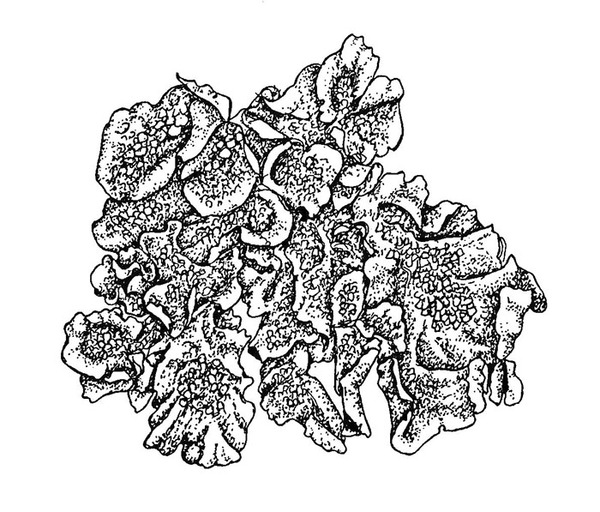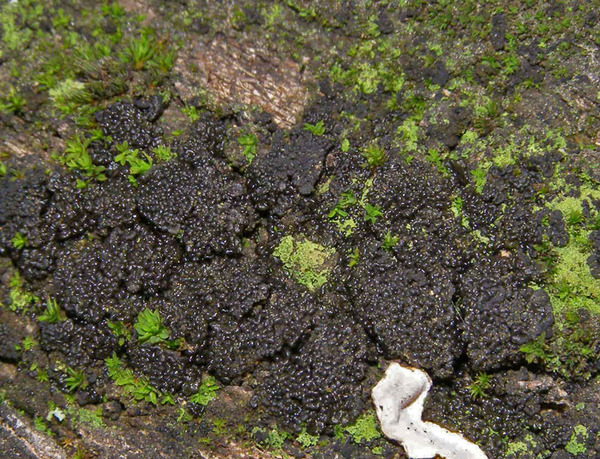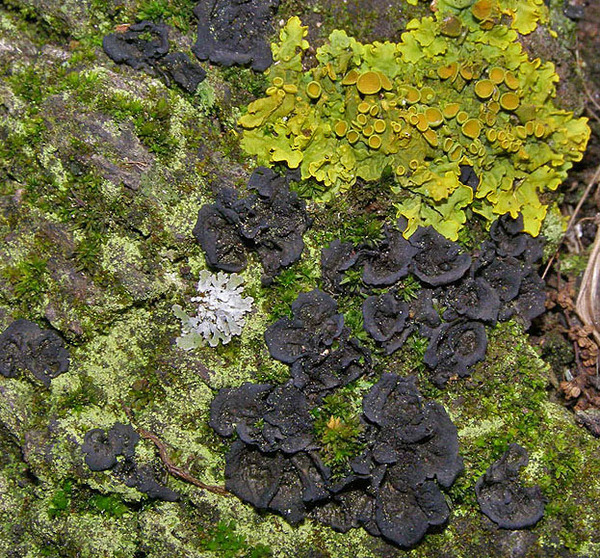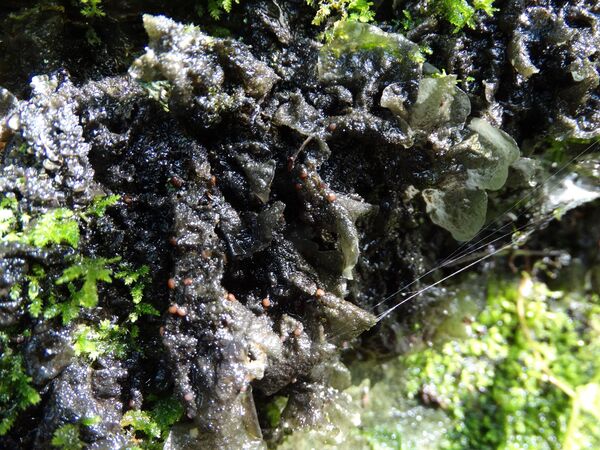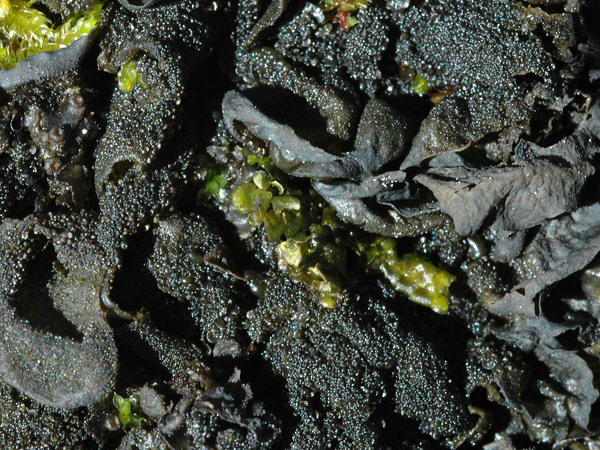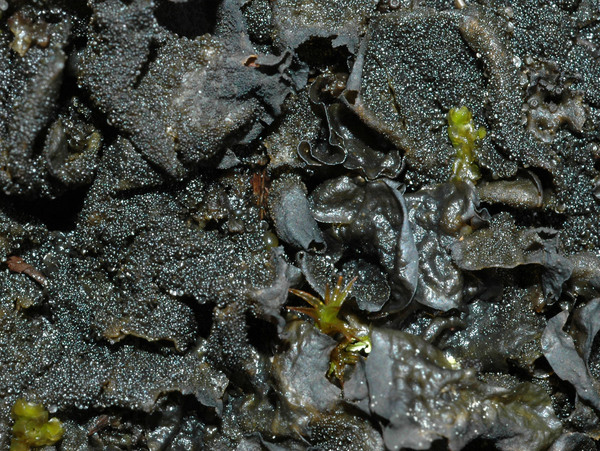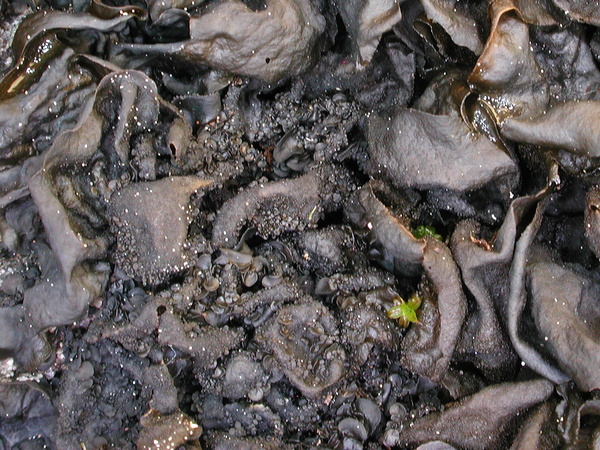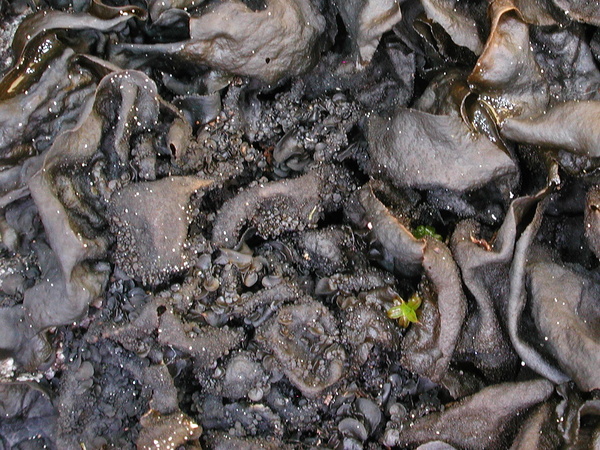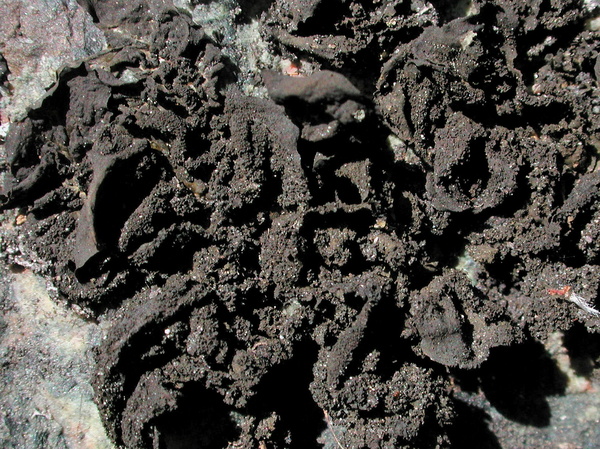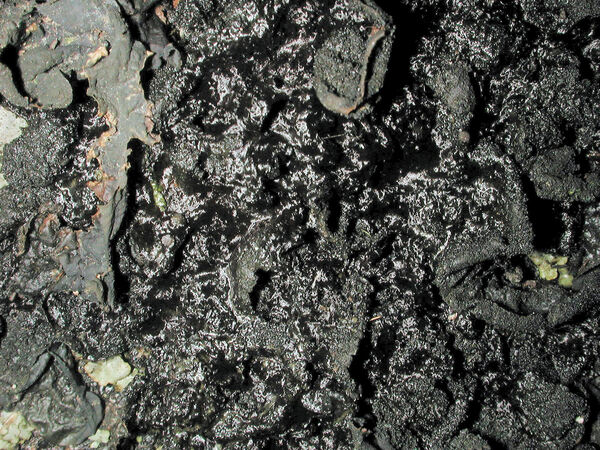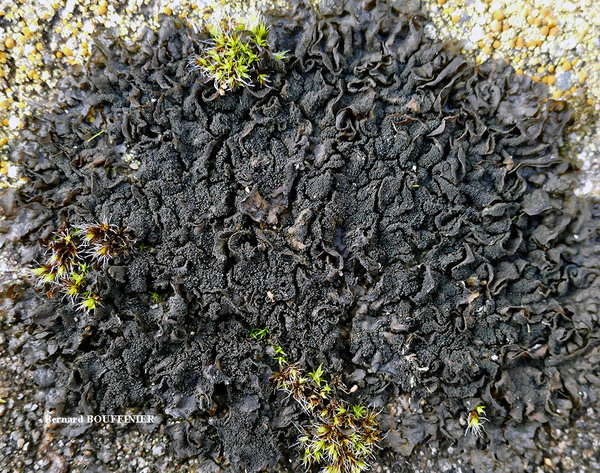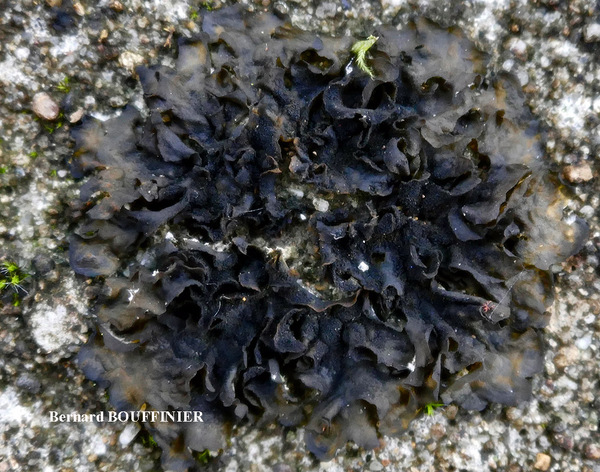Collema flaccidum (Ach.) Ach.
Lichenogr. Univ.: 647, 1810. Basionym: Lichen flaccidus Ach. - K. Vetensk.-Akad. Nya Handl., 16: 14, 1795.
Synonyms: Collema atroplumbeum Hue; Collema furvum var. flaccidum (Ach.) Spreng.; Collema rupestre (Sw.) Rabenh.; Lathagrium rupestre (Sw.) A. Massal.; Lichen rupestris Sw. nom. illegit.; Parmelia flaccida (Ach.) Ach.; Synechoblastus flaccidus (Ach.) Körb.; Synechoblastus rupestris (Sw.) Trevis.
Distribution: N - VG (Carvalho 1997), Frl (Tretiach & Hafellner 2000, Tretiach & Molaro 2007), Ven (Caniglia & al. 1999, Nascimbene 2008c), TAA (Philippi 1983, Nascimbene 2005b, Nascimbene & al. 2007b, 2022), Lomb (Philippi 1983, Arosio & al. 2003, Valcuvia & al. 2003, De Vita & Valcuvia 2004, Gheza 2019, Gheza & al. 2020, 2023), Piem (Morisi & Sereno 1995, Isocrono & al. 2004, Isocrono & Piervittori 2008), VA (Valcuvia 2000, Valcuvia & al. 2000b, Piervittori & al. 2001, Matteucci & al. 2015c, Ongaro & al. 2022), Emil (Gasparo & Tretiach 1996, Tretiach & al. 2008, Fariselli & al. 2020), Lig (Giordani & Incerti 2008). C - Tosc (Benesperi & al. 2007, Benesperi 2011, Brackel 2015), Marc (Nimis & Tretiach 1999), Umb (Ravera 1998, Panfili 2000b, Ravera & al. 2006), Laz (Ravera 2001, Massari & Ravera 2002, Ravera & Genovesi 2008), Abr (Olivieri & Pacioni 1996, Olivieri & al. 1997, 1997b, Loppi & al. 1999, Nimis & Tretiach 1999, Caporale & al. 2008, 2016, Brackel 2015, Corona & al. 2016, Gheza & al. 2021), Mol (Frati & al. 2004, Caporale & al. 2008), Sar (Nöske 2000, Zedda 2002, Rizzi & al. 2011, Cossu 2013, Di Nuzzo & al. 2022). S - Camp (Ricciardi & al. 2000, Nimis & Tretiach 2004, Nascimbene & al. 2010b, Garofalo & al. 2010, Brunialti & al. 2013, Ravera & Brunialti 2013), Pugl (Nimis & Tretiach 1999), Bas (Nimis & Tretiach 1999, Potenza 2006, Potenza & Fascetti 2010), Cal (Puntillo 1996), Si (Czezuga & al. 1994, Grillo 1998, Grillo & Caniglia 2004, Liistro & Cataldo 2011, Ottonello & al. 2011, Campisi & al. 2020).
Description: Thallus foliose, homoiomerous, gelatinous when wet, blackish brown to black, 70-170 µm thick when wet, smooth, loosely attached, up to 6 cm in diam. (usually less). Lobes (0.5-)1-2(-3) cm broad, rounded at apex, flattened, contiguous, appressed, with an entire, undulated, not swollen margin, with isidia-like outgrowths that are globular when young, but soon become flattened and squamiform, 0.2-0.5(-0.8) mm wide, diffuse, mostly simple. Lower surface usually paler, with sparse white hapters. Upper and lower cortex absent. Apothecia rare, lecanorine, sessile and constricted at base, up to 2.5(-3) mm across, with a reddish brown, epruinose or white-pruinose, flat to finally convex disc and a thin, entire, smooth, persistent or finally excluded thalline margin. Thalline exciple pseudocorticate; proper exciple subparaplectenchymatous to rarely almost euthyplectenchymatous; epithecium brownish; hymenium colourless, 90-130 µm high, I+ blue; paraphyses simple or sparingly branched, 2(-4) µm thick, with clavate to subglobose tips; hypothecium colourless. Asci 8-spored, cylindrical-clavate, the apex strongly thickened, the apical dome K/I+ pale blue, with a downwardly projecting K/I+ deep blue tubular structure. Ascospores transversely 3-5-septate, hyaline, fusiform-elongate, (20-)25-35(-40) x 6-7 µm. Pycnidia common, usually thicker than thallus. Conidia bacilliform, straight, (3-)4-4.5(-6) x 1-1.5(-2) µm. Photobiont cyanobacterial (Nostoc, the cells in long chains). Spot tests: all negative. Chemistry: without lichen substances.Note: a mainly temperate to southern boreal-montane lichen with a fragmented holarctic range, found on bark, epilithic mosses, base-rich siliceous and slightly calciferous rocks in sheltered, humid situations; more common in the past and now absent from urban areas and from the Po-Plain; mostly Tyrrhenian in Italy, but still locally frequent in humid Alpine and pre-Alpine areas.
Growth form: Foliose, broad lobed
Substrata: bark and rocks
Photobiont: cyanobacteria, filamentous (e.g. Nostoc, Scytonema)
Reproductive strategy: mainly asexual, by isidia, or isidia-like structures (e.g. schizidia)
Most common in areas with a humid-warm climate (e.g. most of Tyrrenian Italy)
Commonnes-rarity: (info)
Alpine belt: absent
Subalpine belt: absent
Oromediterranean belt: absent
Montane belt: very rare
Submediterranean belt: extremely rare
Padanian area: absent
Humid submediterranean belt: rather common
Humid mediterranean belt: common
Dry mediterranean belt: extremely rare

Predictive model
Herbarium samples
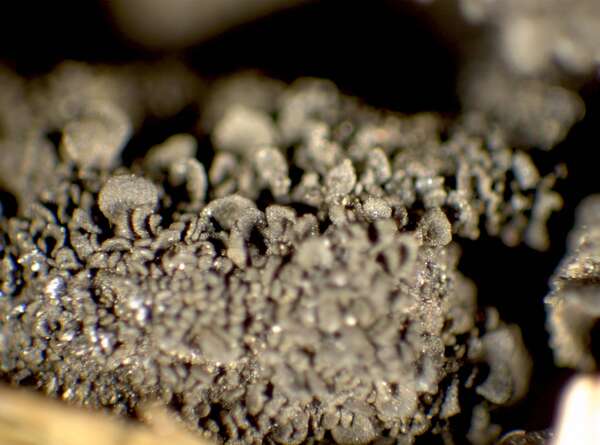

P.L. Nimis; Owner: Department of Life Sciences, University of Trieste
Herbarium: TSB (11346)
2001/12/04
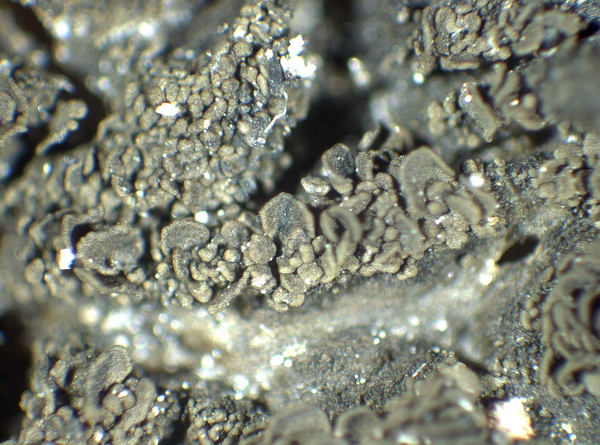

P.L.Nimis; Owner: Department of Life Sciences, University of Trieste
Herbarium: TSB (15001)
2008.03.06
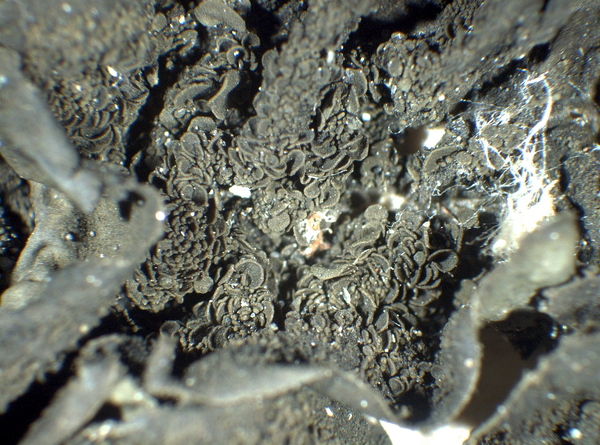

P.L.Nimis; Owner: Department of Life Sciences, University of Trieste
Herbarium: TSB (15001)
2008.03.06
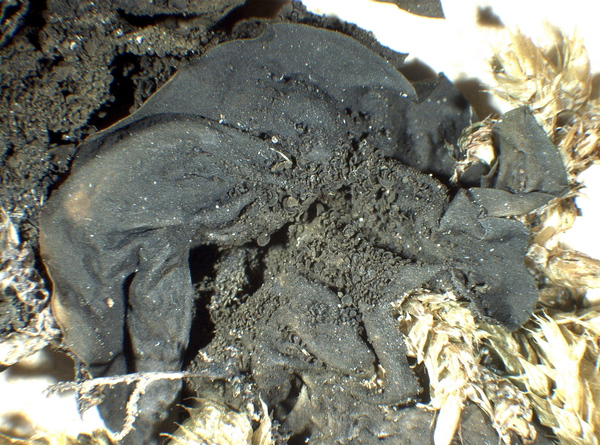

P.L.Nimis; Owner: Department of Life Sciences, University of Trieste
Herbarium: TSB (15001)
2008.03.06
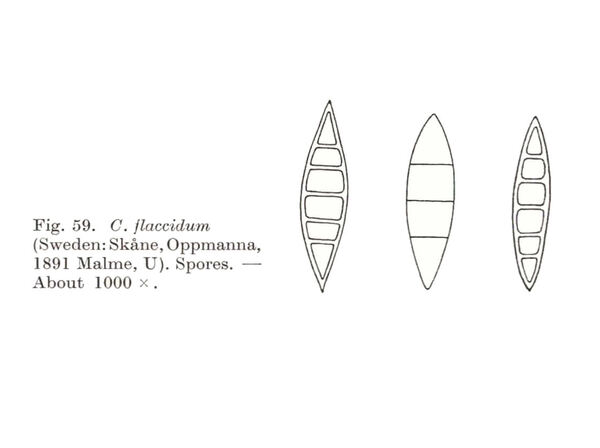
Degelius G. 1954. The lichen genus Collema in Europe: Morphology, Taxonomy, Ecology. Symbolae Bot. Upsal. 13, 2: 1-499.


P.L. Nimis; Owner: Department of Life Sciences, University of Trieste
Herbarium: TSB (11346)
2001/12/04
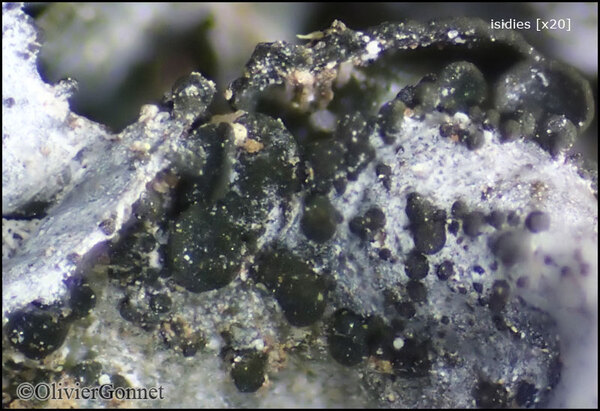
Courtesy Danièle et Olivier Gonnet - Source: https://www.afl-lichenologie.fr/Photos_AFL/Photos_AFL_C/Collema_flaccidum.htm; Owner: -
France, session AFL 2015 dans le Lot, Autoire
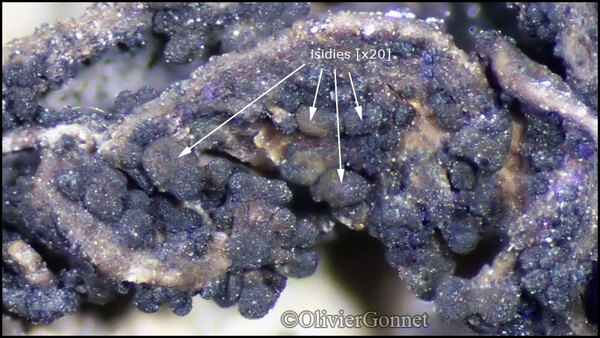
Courtesy Danièle et Olivier Gonnet - Source: https://www.afl-lichenologie.fr/Photos_AFL/Photos_AFL_C/Collema_flaccidum.htm; Owner: -
France, session AFL 2015 dans le Lot, Autoire
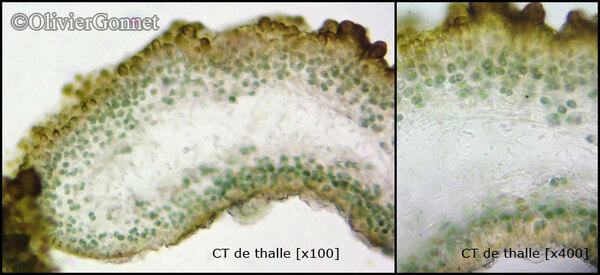
Courtesy Danièle et Olivier Gonnet - Source: https://www.afl-lichenologie.fr/Photos_AFL/Photos_AFL_C/Collema_flaccidum.htm; Owner: -
France, session AFL 2015 dans le Lot, Autoire

Bernard Bouffinier - Source: https://italic.units.it/index.php?procedure=images2&taxon=1129
France, Cranou
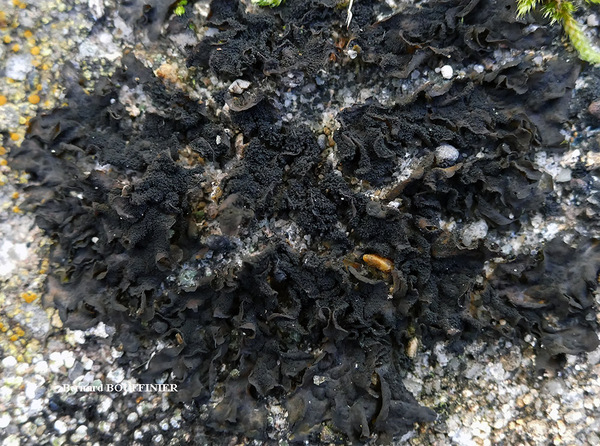
Bernard Bouffinier - Source: https://italic.units.it/index.php?procedure=images2&taxon=1129
France, Cranou
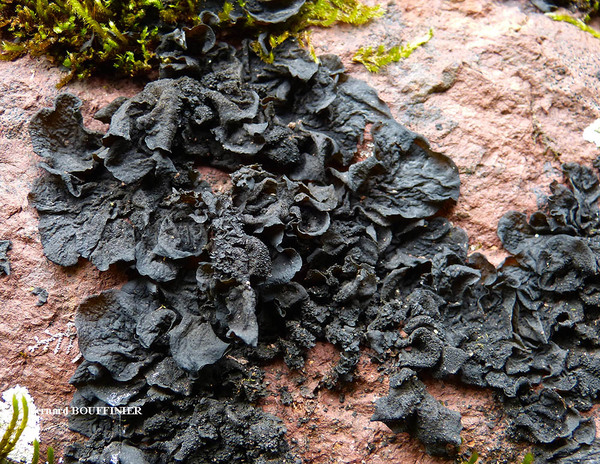
Bernard Bouffinier - Source: https://italic.units.it/index.php?procedure=images2&taxon=1129
France, Source de la Bidouze
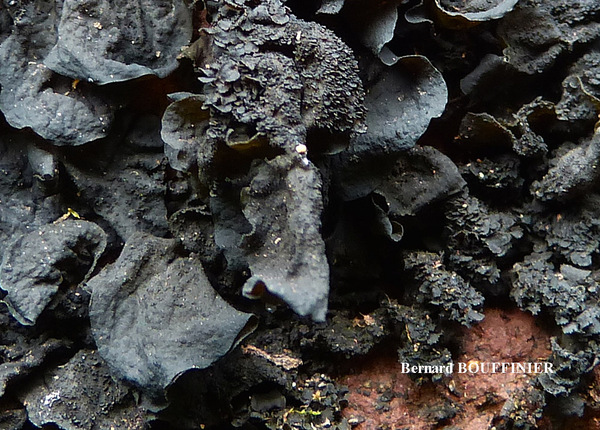
Bernard Bouffinier - Source: https://italic.units.it/index.php?procedure=images2&taxon=1129
France, Source de la Bidouze
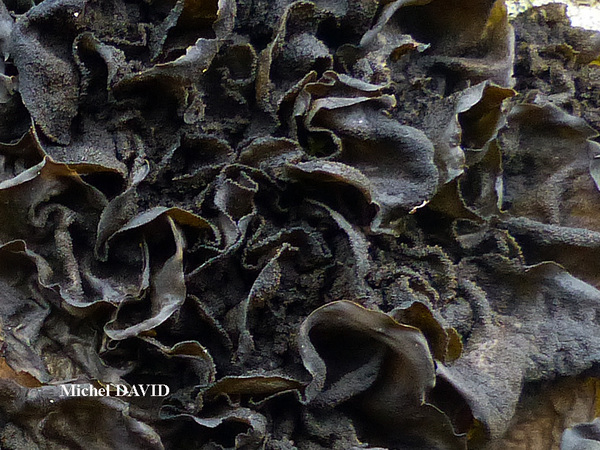
Michel David - Source: https://italic.units.it/index.php?procedure=images2&taxon=1129
France, Landevennec, Abbaye
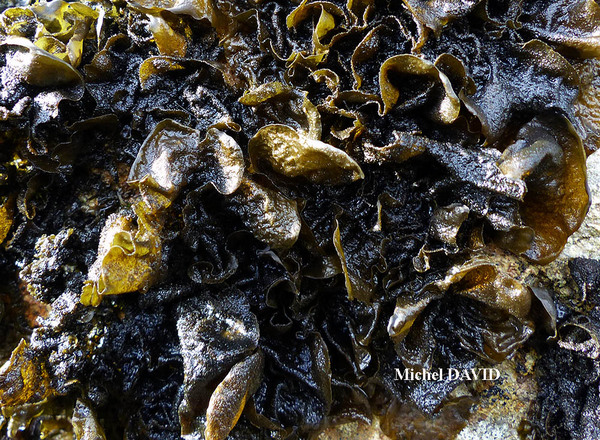
Michel David - Source: https://italic.units.it/index.php?procedure=images2&taxon=1129
France, Landevennec

Michel David - Source: https://italic.units.it/index.php?procedure=images2&taxon=1129
France, Landevennec
Growth form: Foliose, broad lobed
Substrata: bark and rocks
Photobiont: cyanobacteria, filamentous (e.g. Nostoc, Scytonema)
Reproductive strategy: mainly asexual, by isidia, or isidia-like structures (e.g. schizidia)
Most common in areas with a humid-warm climate (e.g. most of Tyrrenian Italy)
Commonnes-rarity: (info)
Alpine belt: absent
Subalpine belt: absent
Oromediterranean belt: absent
Montane belt: very rare
Submediterranean belt: extremely rare
Padanian area: absent
Humid submediterranean belt: rather common
Humid mediterranean belt: common
Dry mediterranean belt: extremely rare

Predictive model
| Herbarium samples |


P.L. Nimis; Owner: Department of Life Sciences, University of Trieste
Herbarium: TSB (11346)
2001/12/04


P.L.Nimis; Owner: Department of Life Sciences, University of Trieste
Herbarium: TSB (15001)
2008.03.06


P.L.Nimis; Owner: Department of Life Sciences, University of Trieste
Herbarium: TSB (15001)
2008.03.06


P.L.Nimis; Owner: Department of Life Sciences, University of Trieste
Herbarium: TSB (15001)
2008.03.06

Degelius G. 1954. The lichen genus Collema in Europe: Morphology, Taxonomy, Ecology. Symbolae Bot. Upsal. 13, 2: 1-499.


P.L. Nimis; Owner: Department of Life Sciences, University of Trieste
Herbarium: TSB (11346)
2001/12/04

Courtesy Danièle et Olivier Gonnet - Source: https://www.afl-lichenologie.fr/Photos_AFL/Photos_AFL_C/Collema_flaccidum.htm; Owner: -
France, session AFL 2015 dans le Lot, Autoire

Courtesy Danièle et Olivier Gonnet - Source: https://www.afl-lichenologie.fr/Photos_AFL/Photos_AFL_C/Collema_flaccidum.htm; Owner: -
France, session AFL 2015 dans le Lot, Autoire

Courtesy Danièle et Olivier Gonnet - Source: https://www.afl-lichenologie.fr/Photos_AFL/Photos_AFL_C/Collema_flaccidum.htm; Owner: -
France, session AFL 2015 dans le Lot, Autoire

Bernard Bouffinier - Source: https://italic.units.it/index.php?procedure=images2&taxon=1129
France, Cranou

Bernard Bouffinier - Source: https://italic.units.it/index.php?procedure=images2&taxon=1129
France, Cranou

Bernard Bouffinier - Source: https://italic.units.it/index.php?procedure=images2&taxon=1129
France, Source de la Bidouze

Bernard Bouffinier - Source: https://italic.units.it/index.php?procedure=images2&taxon=1129
France, Source de la Bidouze

Michel David - Source: https://italic.units.it/index.php?procedure=images2&taxon=1129
France, Landevennec, Abbaye

Michel David - Source: https://italic.units.it/index.php?procedure=images2&taxon=1129
France, Landevennec

 Index Fungorum
Index Fungorum
 GBIF
GBIF

